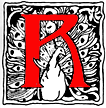
obert Walker Macbeth was born in Glasgow on September 30, 1848, the second son of the portrait painter and photographer Norman Macbeth and his wife Mary Walker. Robert's brothers James Macbeth and Henry Macbeth-Raeburn also became artists. The family settled in Edinburgh in 1861 but moved to London in 1870. Robert studied art at the Royal Scottish Academy School where he was a distinguished student and won the Stewart Prize for imaginative composition. He later attended the Royal Academy Schools in London from 1871 to 1872. He first exhibited at the Royal Scottish Academy in 1867 and at the Dudley Gallery in 1869. He exhibited in London at the Royal Academy, regularly from 1873 until 1904, the Society of Painters in Water Colours, the Grosvenor Gallery, the New Gallery, the Royal Society of Portrait Painters, and at the Fine Art Society. He exhibited at other provincial centres besides the Royal Scottish Academy, including the Royal Society of Artists in Birmingham, the Glasgow Institute of the Fine Arts, the Walker Art Gallery in Liverpool and the Manchester City Art Gallery.

Self-portrait, 1883.
When he moved to London in 1870 he joined the staff of the magazine The Graphic. Macbeth's illustrations were published by American periodicals as well including Harper's Weekly. In 1870 he began contributing to Once a Week and in 1871 to The Sunday Magazine. He later did illustrations for other magazines, including The English Illustrated Magazine, and illustrated books. From the mid 1870s to late 1880s he spent long periods in the fenlands of Lincolnshire, painting subjects such as field labourers. Rural subjects were to feature consistently throughout the remainder of his career. In 1871 he was made an Associate member of the Society of Painters in Water Colours (Old Water-Colour Society), becoming a full member in 1901. In 1883 he was elected an associate of the Royal Academy and became a full member in 1903. In 1878, chiefly in response to the encouragement of his friends Edwin Edwards and Charles Keene, Macbeth took up etching. Most notably amongst the Idyllists he became an accomplished etcher in addition to painting in oils and watercolours. In 1880 he became a member of the Royal Society of Painter-Etchers and Engravers. In 1882 he was elected a member of the Royal Institute of Painters in Water Colours and in 1883 a member of the Royal Institute of Oil Painters.
On August 9, 1887 he married Lydia Esther Bates, the eldest daughter of General Bates of the Bombay native cavalry. The couple moved to Somerset although he kept his house Longsden, in Carlton Hill, in the vicinity of St John's Wood in London. They later lived in west London at 193 Portsdown Road, Maida Vale. The couple had two daughters. During his later years in the 1890s he lived primarily in Washford, near Dunster in Somerset. He died at his home Brentbrook on Wentworth Road, Golders Green, in London on November 1, 1910. His funeral took place at the Golders Green Crematorium.
Macbeth was deeply influenced by the work of British Idyllists of the 1860s, including George Heming Mason, Frederick Walker and G. J. Pinwell, in the pictures he did of rural England including pastoral landscapes. He also painted genre scenes in the manner of artists such as William Quiller Orchardson and Marcus Stone. Walker was well known as an illustrator for magazine and books and as an etcher, both of his own work and reproductive etchings after the work of other artists.
Bibliography
Baldry, Alfred Lys. "R. W. Macbeth, A.R.A." The Art Journal New Series XXXIX (1900): 289-92.
Esposito, Donato. Frederick Walker and the Idyllists. London: Lund Humphries, 2017, Chapter 6, 137-57.
Created 29 May 2023